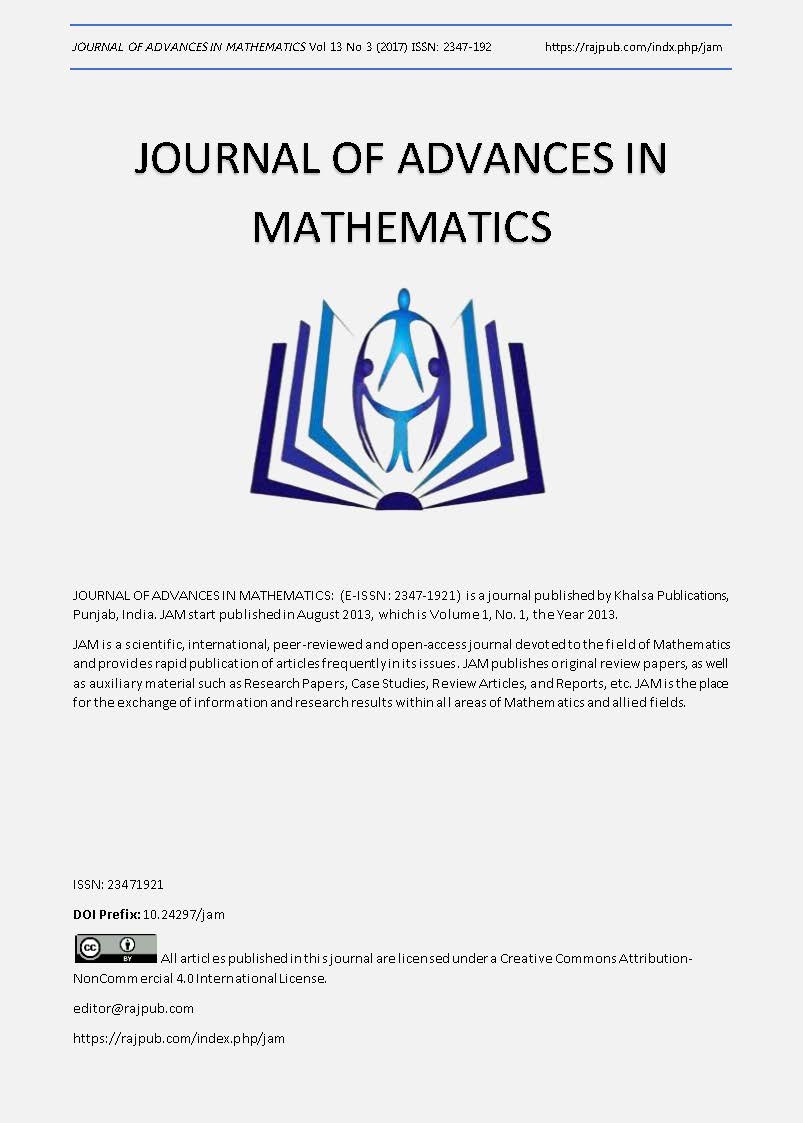The relationship between intensity and stochastic matrices for continuous-time discrete value stochastic non-homogeneous processes with Markov property
DOI:
https://doi.org/10.24297/jam.v13i3.6174Keywords:
Markov process, Non-homogeneous process, Intensity matrix, Stochastic matrixAbstract
The matrices of non-homogeneous Markov processes consist of time-dependent functions whose values at time form typical intensity matrices. For solvingsome problems they must be changed into stochastic matrices. A stochas-tic matrix for non-homogeneous Markov process consists of time-dependent functions, whose values are probabilities and it depend on assumed time pe- riod. In this paper formulas for these functions are derived. Although the formula is not simple, it allows proving some theorems for Markov stochastic processes, well known for homogeneous processes, but for non-homogeneous ones the proofs of them turned out shorter.
Downloads
References
[2] Chen, B.; Zhou, X.-H., A correlated random eects model for non-homogeneous Markov processes with nonignorable missingness, J. Mul-
tivar. Anal. 117 (2013), 1{13.
[3] Cheng-Chi Huang Non-homogeneous Markov chains and their applica- tions, A Dissertation Submitted to the Graduate Faculty in Partial Ful-
llment of The Requirements for the Degree of DOCTOR OF PHILOS-OPHY. Iova State University. (1977), http://lib.dr.iastate.edu/rtd
[4] Dessie, Z. G., Modeling of HIV/AIDS dynamic evolution using non-homogeneous semi-Markov process, SpringerPlus (2014) 3: 1-9. 3 (2014),
1{9.
[5] Di Biase, G.; Janssen, J.; Manca R., A Non-Homogeneous Continuous Time Semi-Markov Model for the Study of Accumulated Claim Process,
Methodol. Comput. Appl. Probab. 12 (2010), 227{235.
[6] Janssen, J.; Manca, R., Numerical Solution of Non-Homogeneous Semi-Markov Processes in Transient Case, Method. Comput. Appl. Probab.
3 (2001), 171{293.
[7] Feller, W., An introduction to probability theory and its applications, vol. 1, John Willey and Sons, Inc. New York (1967).
[8] Latouche, G.; Ramaswami, V., Introduction to Matrix Analytic Methods in Stochastic Modelling, ASA-SIAM, (1999).
[9] Lucas, A.; Monteiro, A.; Smirnov, G. V. Nonparametric Esti-mation for Non-homogeneous Semi-Markov Processes: an Applica-
tion to Credit Risk, Tinbergen Institute Discussion Paper. (2006), https://www.econstor.eu/bitstream/10419/86386/1/06-024.pdf
[10] Miranda, J. C. S.; Morettin P. A., Estimation of the intensity of non-homogeneous point processes via wavelets, Ann. Inst. Stat. Math. 63
(2011), 1221{1246.
[11] Reynaud-Bouret, P., Adaptive estimation of the intensity of inhomoge-neous Poisson processes via concentration inequalities, Probab. Theory
Relat. Fields 126 (2003), 103{153.
[12] Ruggeri, F. ; Ganesan, S., On Modeling Change Points in Non-Homogeneous Poisson Processes, Stat. Infer. Stoch. Processes 8 (2005),
311{329.
[13] Soko l, M., A probability space of continuous-time discrete value stochas-tic process with Markov property, J. Adv. Math. 12 (2016), 5975{5989.
[14] Stenberg, F. Manca, R. Silvestrov, D., An Algorithmic Approach to Dis-crete Time Non-homogeneous Backward Semi-Markov Reward Processes
with an Application to Disability Insurance, Methodol Comput Appl Probab. 9 (2007), 495{519.
[15] Syski, R., Passage Times for Markov Chains, IOS Press, (1992).
[16] Vidyasagar, M., Hidden Markov Processes : Theory and Applications to Biology, Princeton University Press., (2014).
[17] Yu, J. S.; Lin Y. K., Numerical path integration of a non-homogeneous Markov process, Inter. J. Non-Linear Mech. 39 (2004), 1493{1500.
Downloads
Published
How to Cite
Issue
Section
License
 All articles published in Journal of Advances in Linguistics are licensed under a Creative Commons Attribution 4.0 International License.
All articles published in Journal of Advances in Linguistics are licensed under a Creative Commons Attribution 4.0 International License.








